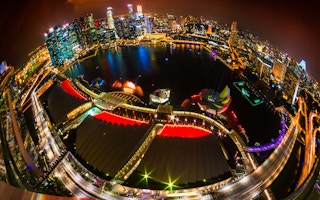As countries all over the world continue to submit carbon reduction pledges to the United Nations in a bid to tackle climate change, buildings will play a key part in the success of government efforts to tackle climate change, said experts at the close of the International Green Building Conference in Singapore.
Terris Willis, chief executive of the World Green Building Council (WGBC), noted that already, about 98 per cent of cities in the C40 Cities Climate Leadership Group are experiencing climate disasters today such as increasing floods, heatwaves, droughts, which are all putting economies and societies at risk.
C40 is a network of the world’s megacities taking action to reduce greenhouse gas emissions. Comprising 78 member cities, the network aims to address climate risks and impact locally and globally by leveraging on each other’s knowledge and expertise.
This makes working with cities and mayors on climate change a top priority. Speaking to a room full of business leaders at the BCA Breakfast Talk for CEOs on the final day of the event, Wills said: “This is absolutely critical. Cities are in the frontline in the battle against climate change not only because they are experiencing the negative impacts, but also they have the powers to act.”
“Cities and their mayors around the world can take significant action in areas which can reduce greenhouse gas emissions and that’s why we believe that we at the WGBC need to work with cities.”
Wills added that what’s encouraging is that a lot of work is already being done by city leaders around the world.
Chicago in the United States, for instance, with a population of about 2.7 million led by mayor Rahm Emanuel, set out to slash the city’s greenhouse gas emissions in a programme called Retrofit Chicago.
The overhauls including new lighting systems, smarter climate control practices and window replacements which are estimated to create about 1,000 jobs and save US$20 million a year in energy bills.
Wills also cited Australia’s Melbourne, which has an initiative involving 1200 buildings that is aimed at helping building owners, managers and facility managers improve the energy and water efficiency and reduce waste of commercial buildings in the city, home to about 4.1 million people.
They get rebates and matching funding for projects such as lighting retrofits and building tune-ups that improve energy efficiency.
In India, the Mahindra Group and the government of Tamil Nadu are aiming to create a carbon-neutral development called Mahindra World City Jaipur which spans 3000 acres.
Wills noted that there are many more examples – from Denmark’s Copenhagen to South Africa’s Johannesburg – of cities that are embracing sustainability, and the building and construction sector has a vital role to play in the movement.
“It’s important to remember that green buildings equal green cities,” she said. “We need to help the mayors by working on green buildings all around the world.”
Rallying citizens and people
The key to doing that is to rally property developers and owners to embrace sustainability as an inherent part of business, said Kwek Leng Joo, deputy chairman of property developer City Developments Ltd (CLD), at the same panel.
CDL is recognized as a leader in Singapore’s green building movement, with 57 buildings having been awarded the country’s Green Mark certification.
Kwek shared how CDL started its sustainability journey about 20 years ago, way before sustainability became a buzzword in the corporate sector. It was slow-going at the beginning, but the company pressed on with implementing initiatives such as using environmentally-friendly building materials and energy efficient lighting systems.
If a leader does not believe in what he is doing, he will not be able to mobilize the people to implement the programmes, said Kwek. The second factor is a supportive staff, and the third is a plan that can be implemented “with some degree of confidence,” he added.
“If you have these – the leadership and strong support, and a good majority of the people in the company feel that they can play a part and they will play a part – then the chances of success will be much higher,” he told the 100-strong audience at Marina Bay Sands.
Chris Fossick, managing director for Singapore and Southeast Asia, JLL, who also spoke at the panel, noted that involving building users is also a key part of the green building movement.
At the end of the day, while a city’s government has a lot of power to make significant changes, it “cannot do everything,” said John Keung, CEO of Singapore’s BCA.
“There is a strong need for the private sector to come on board,” said Keung. “Of course we are blessed in thee sense that we have leaders like CDL and other companies in our sector even before we did anything.
“But we want more to come on board…then the whole industry can move forward.”
Eco-Business is producing a special e-newsletter featuring stories on the proceedings at IGBC 2015, kindly supported by City Developments Ltd and the Building and Construction Authority. Sign up to receive the newsletter here.













